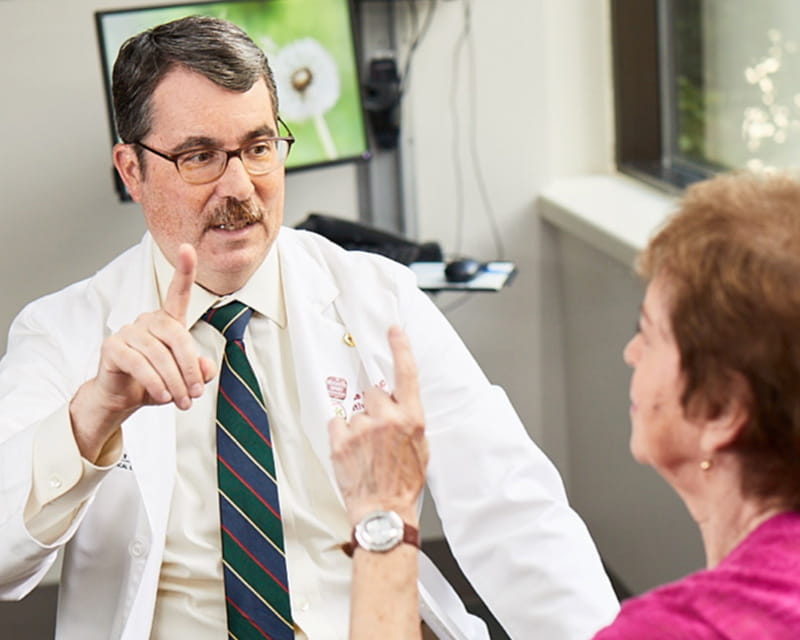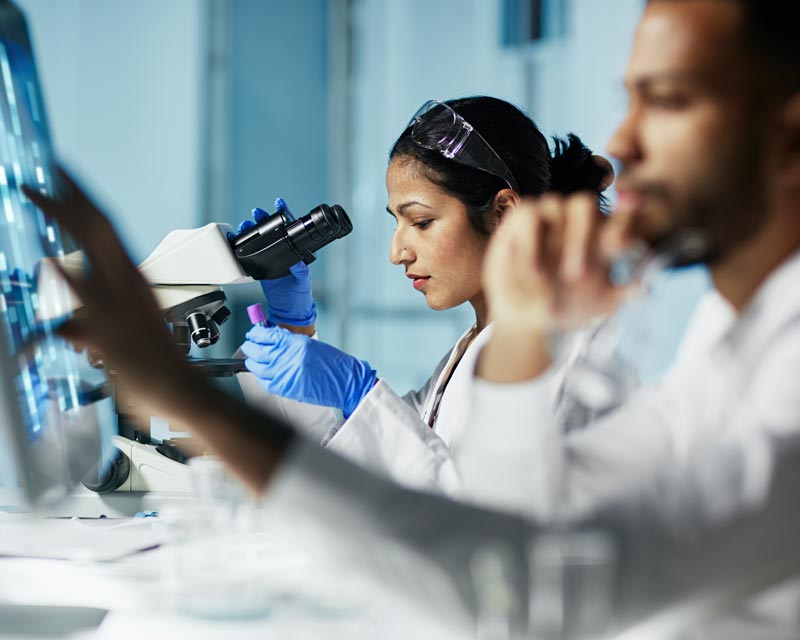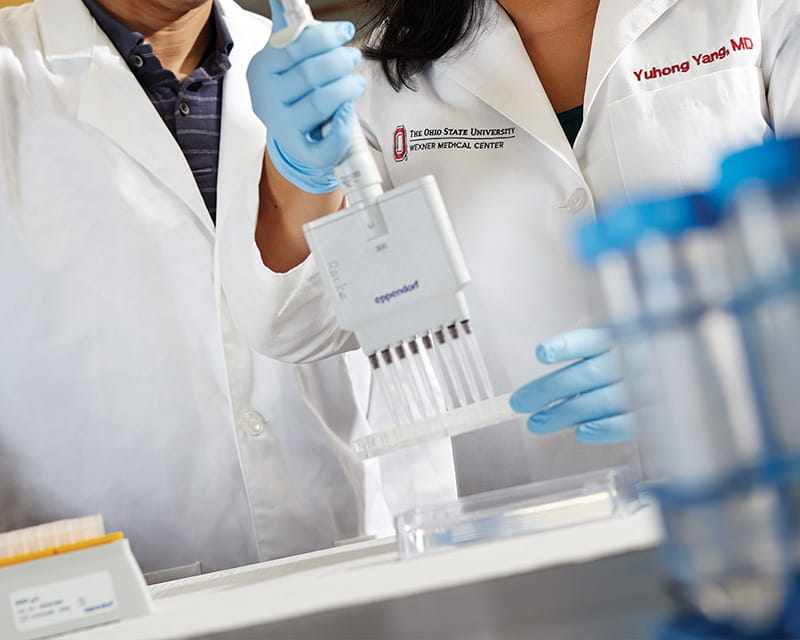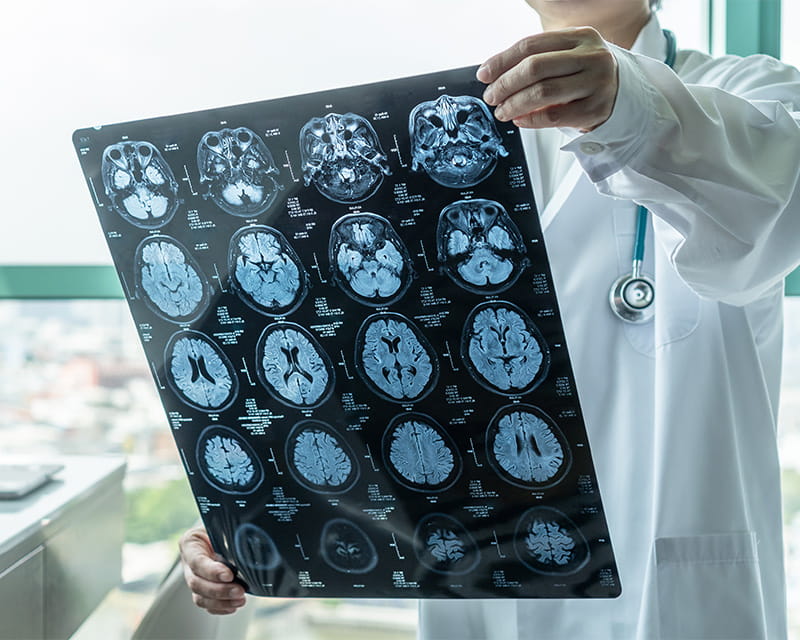
Ohio State researchers identify new biomarkers that differentiate Lewy body dementia from Alzheimer’s and Parkinson’s

Obtaining human biological specimens from individuals with neurological diseases just got easier for scientists from The Ohio State University Wexner Medical Center’s Neuroscience Research Institute (NRI).
In January 2021, the NRI launched a centralized Brain Bank & Biorepository (NRI-BBB) that’s available to clinical and laboratory neuroscientists from the medical center and The Ohio State University College of Medicine. A joint effort of NRI staff, physicians, residents and trainees are all involved in electronically consenting participants. The NRI-BBB team then prospectively collects and stores biological samples from patients with most neurological disorders — and at all stages of disease — then follows these patients longitudinally with serial biological sample collections.
Now, with access to both biospecimens and long-term clinical data, scientists are better equipped to lead translational research activities that may improve prevention, diagnosis and treatment of neurological disease.
The Ohio State Wexner Medical Center is no stranger to specimen storage. In the late 1990s, its Buckeye Brain Bank began collecting and storing brain tissue samples from deceased donors with Alzheimer’s disease and other types of dementia.
With tissue from around 100 human brains available at any given time, researchers had abundant access to those specific specimens. But for many years, their scientific efforts were limited to studies of cognitive disorders.
“Our new Brain Bank & Biorepository is a much more robust version of the original Buckeye Brain Bank,” says Erica Bell, PhD, a biomarker expert and administrative director of the NRI. “We’re continuing to collect brain samples at the time of autopsy from patients with Alzheimer’s, Parkinson’s disease and other neurological disorders. But for the first time, we are expanding the patient population we are collecting from and prioritizing collection of specimens from living patients including serum, plasma, peripheral blood mononuclear cells, cerebrospinal fluid, and skin, muscle and nerve biopsy tissues.”
Once a patient consents, extra clinical samples taken from routine blood draws, lumbar punctures and other tests can be banked throughout their lifetime. Specimens will be tracked using a sophisticated barcoding system.
Moving forward, maintaining the new NRI-BBB will take ample space — and adequate staffing. To that end, a team of three full-time employees oversees biobanking operations, regulatory compliance, consenting, sample processing and specimen storage. A volunteer committee helps manage review and approval of all biospecimen and data requests.
“Running a successful biorepository requires special skills and lots of behind-the-scenes effort,” Bell says. “On the clinical side, we must collect samples without slowing down patient care. And if we don’t collect certain samples the right way, they’re less valuable. For example, it’s imperative that we cryopreserve certain cells.”
The team is already using biological samples to test single-cell RNA sequencing technique for cerebrospinal fluid.
“As part of our infrastructure, we’re working to create a pipeline for rapid sequencing of fresh cerebrospinal fluid samples,” Bell says. “This may help scientists who want to study individual cellular responses in limited cerebrospinal fluid which is essential as you lose some cell viability once cerebrospinal fluid is frozen.”
The NRI already has in place a research point-of-care lab adjacent to every neurology clinic. Their current infrastructure includes a freezer farm, point-of-care labs in six inpatient and outpatient areas, and a Biosafety Level 2 (BSL-2) laboratory on the Ohio State Wexner Medical Center’s main campus.
Neurological basic science researchers at the Ohio State College of Medicine have a long history of breakthrough findings and other achievements. But, like most other neuroscientists with limited access to human tissue, they’ve historically relied on animal models.
“Our new biorepository is key to bringing research developments from cell lines or animal models into the clinic,” Bell says. “It used to be that biological specimens were a scarce resource. Now, it will be much easier to validate lab findings in patient samples. A critical aspect of our biorepository is the linkage of specimens with high-quality demographic clinical, electrophysiologic and radiological data. This will help bring the NRI to the forefront of translational neuroscience research.”

Ohio State researchers identify new biomarkers that differentiate Lewy body dementia from Alzheimer’s and Parkinson’s

Biomarker breakthroughs at Ohio State transform disease diagnosis, predictability and treatment

The Ohio State University Wexner Medical Center pushes boundaries for neurological care